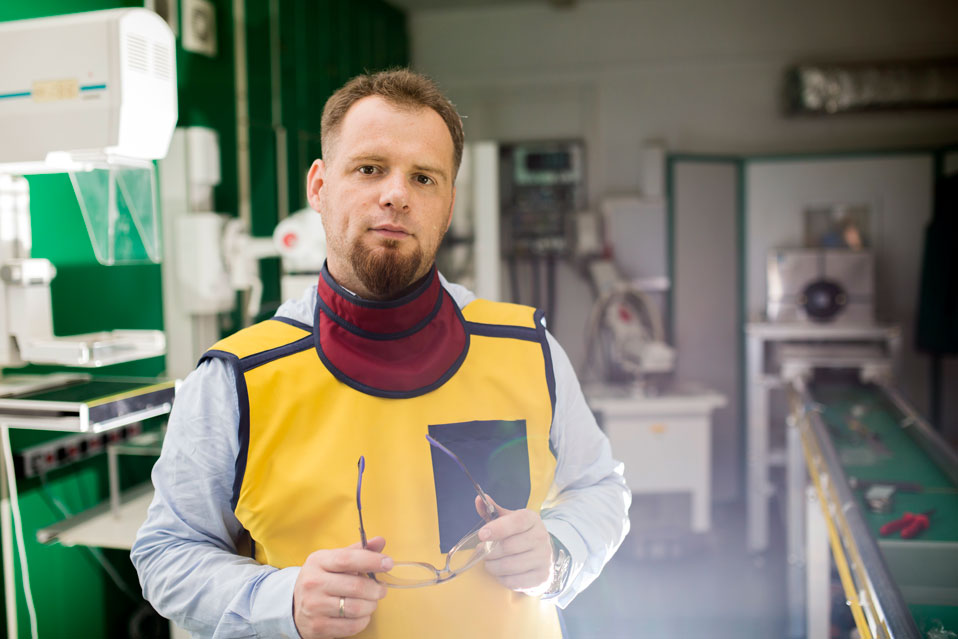Assessment of eye lens exposure to X-ray radiation in medical staff
Assessment of eye lens exposure to X-ray radiation in medical staff
- Principal Investigator: Marcin Brodecki, MSc, Nofer Institute of Occupational Medicine
- Project title: Eye lens exposure to X-ray radiation of medical staff as a risk factor for radiation cataract induction
- Funding scheme: PRELUDIUM 5, announced on 15 March 2013
The eye lens is one of the most radiosensitive tissues in the human body. Excessive exposure to ionizing radiation may induce an acute radiation effect in the form of radiation cataract. In order to minimize these adverse health effects, the value of the annual dose limit established by the International Commission on Radiological Protection (ICRP) has been reduced 150-fold (from 300mSv to 20mSv) over the 35 years since relevant legal regulations were first introduced by the organization. Along with the reduction of the absorbed dose down to the level of 0.5Gy, at which radiation effects are still observed in the eye, the situation has required the development of new dosimetric methods in the field. In accordance with the latest literature reports, dose limit reduction is particularly important, e.g., for staff in procedure rooms, where dose limits may be often exceeded. Because of the nature of X-ray procedures, radiation exposure is determined by many different factors and the risk posed to eye lenses is difficult to assess accurately and fraught with uncertainty.
The purpose of the research project was to reliably assess radiation doses and mechanisms behind high eye lens radiation exposure in staff employed at hemodynamic labs and to correlate these findings with data on annual dose limits associated with the induction of radiation cataract. The analysis of radiation exposure has a considerable impact on the development of individual eye lens dosimetry for the most frequent procedures in radiology and interventional cardiology. The project identified the most important parameters that affect the level of radiation exposure, i.e. the patient size (source of dispersion), the X-ray beam quality, the type of angiographic projection, and the use of personal protection measures (e.g. lead glasses). For example, we were able to obtain the full dosimetric description of radiation spectra emitted from angiographic and intraoperative X-ray machines, and also data on conversion coefficients (Sv/Gy) for operational values Hp(3), which are of key importance for correct eye dosimetry. Data obtained by studying the distribution of radiation fields in the vicinity of the eye, taking into account the presence of lead glasses, is extremely valuable from the point of view of the future design and protective properties. Clinical and phantom measurements conducted in the framework of the project also allowed us to identify the places where dosimeters should be placed in order to reliably assess eye lens exposure. Doses anywhere between 0.01 and 1.20mSv were detected during a single medical procedure, which, considering their large annual number (more than 500), means that the 20mSv dose limit and the accumulated dose representing the cataract induction threshold may be significantly exceeded.
Marcin Brodecki, MSc
Graduated in experimental physics from the Faculty of Physics and Applied Informatics of the University of Łódź (2007), and went on to complete postgraduate studies in medical physics at the Medical University of Łódź, earning the title of specialist awarded by the Medical Examinations Centre (2015). He is currently working on his a doctoral thesis in the Department of Radiological Protection at the Institute of Occupational Medicine in Łódź, where he has headed the Secondary Standard Dosimetric Laboratory since 2013. His research interests centre on issues of radiological protection and the development of methods for detecting radiation in medical applications.
Date of publication: 2nd Jan, 2018




 Facebook
Facebook Twitter
Twitter LinkedIn
LinkedIn YouTube
YouTube Instagram
Instagram